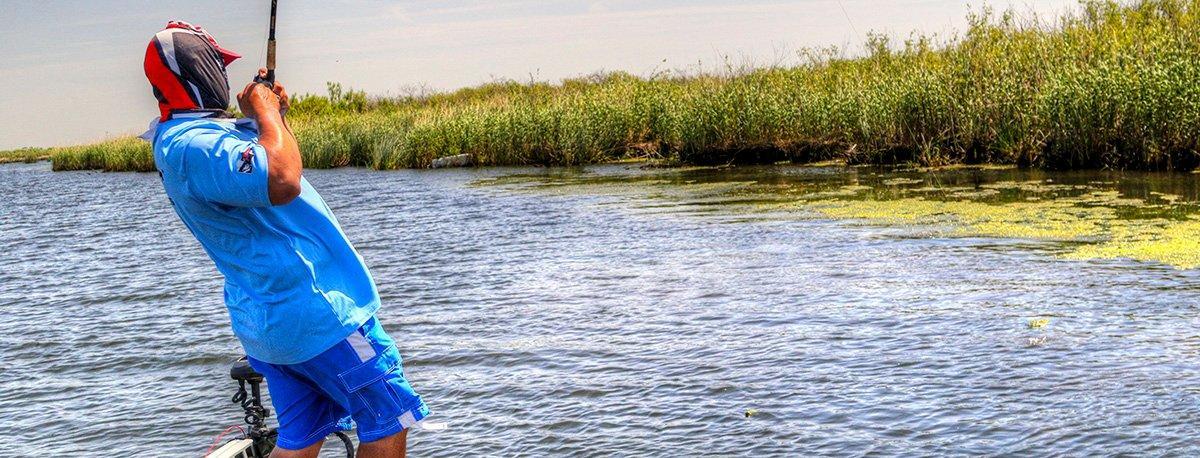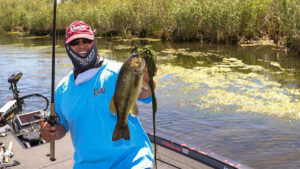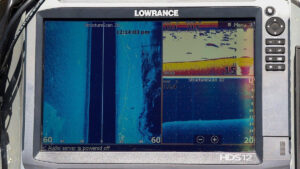Fishing tidal waters often proves perplexing, as daily ebb and flow repositions fish and shuffles the deck. In this dynamic environment, western pro Ken Mah finds he does some of his best work when he’s fishing grass edges for bass.
Pretty much anytime, excluding the spawn, the Elk Grove, California angler expects to find the most aggressive bass positioned in predictable areas of a grass line. That’s what Mah calls “the outer third.”
“I think if a big fish is in a mat the size of your truck, that fish can guard the entire area, so it’s going to own the best piece of real estate on that piece of cover,” Mah said. “In the grass, there are cuts and points and little holes (in that outer third). You have to figure out what depth they want to be in.
“You’d be surprised how meaningful a 1- or 2-foot depth change can be. When I’m punching, I’ll color exactly the last 6 feet of my braided line with a black permanent marker because (in addition to camouflaging the line) it tells me precisely how deep my bait is when I get bit. That gives me an advantage by knowing what depth those fish are most active.”
Mah devotes significant effort into developing the outer third pattern because it allows him to focus on making the bulk of his presentations to the highest percentage spots. Maximized efficiency increases his productivity.
To this point, Mah stresses the importance of monitoring your electronics. He favors a distinctly flat edge on one side of his graph contrasting the uneven contour of a grass line on the other. Especially critical on falling tides, when compressing vegetation squeezes fish outward, this ensures that he’s kept the grass on one side of his boat.
“When I’m fishing next to a low-tide grass line, I don’t like having grass under my boat because the fish could be behind me,” Mah says. “They feel safe in the grass, so they could be swimming anywhere you find grass.”
Taking a transcontinental leap to the East Coast’s most prominent tidal fishery, Potomac River guide Capt. Steve Chaconas offers another key perspective. Essentially, his 3D approach to grass lines prevents the paralysis by analysis often suffered by overthinking anglers.
“When fishing grass on a tidal fishery like the Potomac River, consider the 3 edges:
- Outside
- Inside
- Top
“Tides raise and lower the water and move in and out,” Chaconas said. “Baitfish move toward the bank as water rises and away from the bank as it falls. Simply put, fish into the inner edge at rising higher tides. Concentrate on the outer edge at falling tides and the top edge in between.”
For low-tide work, Chaconas likes jigs, Texas-rigged soft plastics, swim jigs, vibrating jigs and frogs. For inside edges, he likes a spinnerbait or a Mann’s Baby 1-Minus in 4 feet or less.
“For the top edge, use an in-and-out approach for locating fish. Instead of paralleling the bed back and forth, zigzag by moving toward the inner edge and back to the outer edge. Once fish are located, Power Pole down and fish until they stop biting as they move toward the inner or outer edges. Pull up the Power Poles and move to catch up and then Power Pole down again.”















